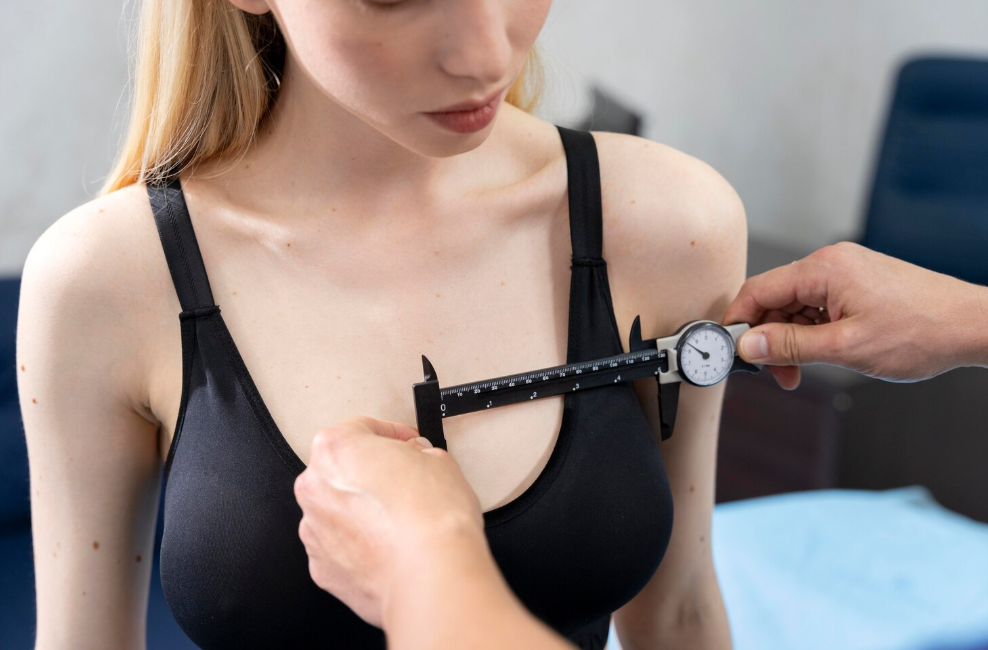Treatment Overview
TRAM (Transverse Rectus Abdominis Myocutaneous) Flap Breast Reconstruction in Korea is an advanced procedure where skin, fat, and a portion of the rectus abdominis muscle from the lower abdomen are used to reconstruct the breast. This autologous reconstruction technique is often chosen for patients seeking natural breast volume and long-lasting results after mastectomy.
Korean surgeons are renowned for their microsurgical precision, aesthetic expertise, and donor site care, making Korea a top destination for TRAM flap breast reconstruction.
Purpose & Benefits
The primary goal of TRAM flap reconstruction is to rebuild a natural-looking breast using the patient’s own tissue, reducing dependence on implants.
Key Benefits:
- Restores breast volume and contour naturally
- Uses the patient’s tissue, avoiding implant-related complications
- Provides long-lasting, soft, and natural-feeling results
- Can improve abdominal contour, similar to a tummy tuck
- Minimizes risk of foreign body reaction
- Enhances symmetry in unilateral or bilateral reconstruction
Ideal Candidates
TRAM flap reconstruction is suitable for patients who:
- Have undergone mastectomy or lumpectomy
- Prefer autologous tissue reconstruction over implants
- Have sufficient lower abdominal tissue
- Are healthy and able to undergo microsurgery
- Desire long-lasting, natural aesthetic outcomes
Possible Risks & Complications
Even with advanced Korean techniques, potential risks include:
- Donor site complications such as abdominal weakness or hernia
- Flap loss or partial tissue necrosis (rare with experienced surgeons)
- Swelling, bruising, or tenderness at donor or breast site
- Infection or delayed wound healing
- Minor asymmetry or contour irregularities
- Rare anesthesia-related risks
Surgical Techniques Used
Korean surgeons employ advanced methods to maximize outcomes:
- Pedicled TRAM Flap: Tissue remains attached to its original blood supply and rotated to the chest
- Free TRAM Flap: Tissue completely detached and reconnected using microsurgery for optimal perfusion
- Muscle-Sparing Techniques: Reduce abdominal muscle removal to maintain strength and minimize complications
- Combination with Fat Grafting: Improves breast contour and symmetry
- Scar Minimization: Advanced suturing and incision planning for natural aesthetics
Recovery & Aftercare
- Hospitalization typically lasts 4–7 days for monitoring flap viability
- Light activities resume in 2–3 weeks
- Avoid heavy lifting or abdominal strain for 6–8 weeks
- Compression garments recommended for donor and breast sites
- Regular follow-up visits to monitor flap survival, symmetry, and donor site healing
Results & Longevity
- Immediate restoration of breast volume and shape
- Long-lasting, natural-feeling breast tissue with minimal foreign body complications
- Korean surgeons emphasize soft contour, symmetry, and minimal visible scarring
- Can be combined with secondary procedures, such as nipple reconstruction or fat grafting, for enhanced aesthetics
Treatment Process in Korea
Korea is a leading destination for TRAM flap reconstruction due to microsurgical expertise, advanced facilities, and patient-centered care:
- Consultation & Assessment: Evaluate chest wall, abdominal tissue, and reconstruction goals
- Customized Surgical Plan: Determine flap type (pedicled or free), need for fat grafting, and optional nipple reconstruction
- Surgical Procedure: Harvest abdominal tissue, transfer to chest, and secure flap; microsurgery performed if free flap is chosen
- Post-Operative Monitoring: Flap perfusion, donor site care, and early complication management
- Rehabilitation & Aftercare: Compression garments, gradual activity resumption, and abdominal exercises
- Medical Tourism Support: English-speaking coordinators, recovery accommodations, and follow-up guidance for international patients
- Follow-Up Assessments: Ensure symmetry, flap viability, and optimal donor site recovery
Cost Range
The cost of TRAM flap breast reconstruction in Korea depends on flap type, complexity, and combination procedures:
- Pedicled TRAM Flap: ₩15,000,000 – ₩25,000,000 KRW
(Approx. $11,500 – $19,000 USD) - Free TRAM Flap / Complex Reconstruction: ₩20,000,000 – ₩35,000,000 KRW
(Approx. $15,200 – $26,600 USD) - With Fat Grafting or Nipple Reconstruction: ₩25,000,000 – ₩40,000,000 KRW
(Approx. $19,000 – $30,500 USD)
Additional Costs:
- Pre-operative imaging and consultations: ₩200,000 – ₩500,000 KRW ($150 – $380 USD)
- Hospital stay, medications, and post-op care: ₩2,000,000 – ₩5,000,000 KRW ($1,500 – $3,800 USD)
- Follow-up visits and secondary procedures: ₩200,000 – ₩800,000 KRW ($150 – $610 USD)
Popular Clinics
Top clinics in Korea for TRAM flap breast reconstruction include:
- Banobagi Plastic Surgery Clinic – advanced autologous breast reconstruction expertise
- JK Plastic Surgery Center – internationally accredited, skilled in free and pedicled TRAM flaps
- ID Hospital Seoul – precision flap transfer with high success rates
- View Plastic Surgery Hospital – natural breast shaping and donor site care
- Regen Plastic Surgery – combines TRAM flap with fat grafting and nipple reconstruction for optimal results




